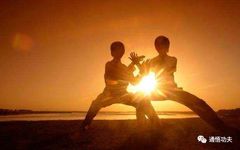Throughout the practice of Tai Chi, the concepts of “Yin and Yang” and “Void and Reality” are consistently integrated. This is reflected in the movements of Tai Chi, where each posture embodies the principles of “Opening and Closing”, “Round and Square”, “Rolling and Releasing”, “Void and Reality”, “Light and Heavy”, “Soft and Hard”, “Slow and Fast”, and features unique forms of oppositional unity such as left and right, up and down, inside and outside, large and small, and advancing and retreating. These principles form the foundation of Tai Chi.
Not only is Tai Chi unique in its external appearance, but it also has specific internal requirements. When practicing Tai Chi, one must first use intention rather than brute force. Thus, Tai Chi is an internal practice of intention and energy, where one cultivates both intention (Yi) and energy (Qi). The characteristic of this intentional movement is the essence of Tai Chi, guiding all its other features.

Furthermore, during Tai Chi practice, the body should exhibit a lengthening and alternating spiral motion, requiring movements to demonstrate both softness and hardness, as well as elasticity. The dynamics of Tai Chi demand that when one part moves, the whole body moves, creating a continuous flow. The speed of movements should vary, alternating between slow and fast. The strength should also balance softness and hardness, achieving a harmonious integration. The posture and movements must be upright and centered, with a balance of void and reality, and an integration of opening and closing. Only by meeting these conditions can Tai Chi fully exert its unique effects. In terms of health benefits, it not only enhances the function of the limbs and internal organs but also trains and strengthens the ability of consciousness to direct energy, which is the ability to “use intention rather than force”, allowing Qi to circulate throughout the body. This practice cultivates both Qi and intention, leading to a naturally strong body. Similarly, in martial applications, Tai Chi has its unique advantages: it can use lightness to overcome heaviness, slowness to counter speed, and control nature while mastering it, achieving a state where the whole body moves as one, allowing for an understanding of oneself and the opponent, as well as the timing and momentum of movements.
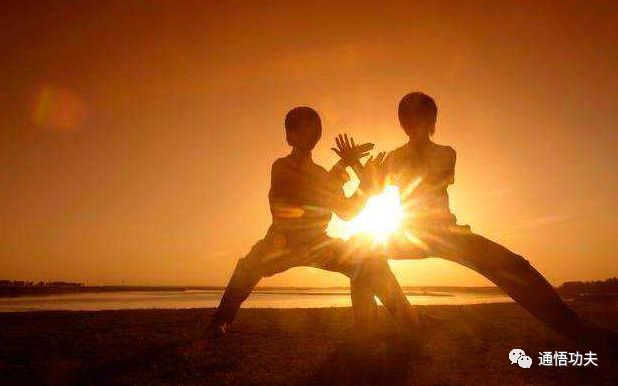
1. Intentional Movement Governed by the BrainTai Chi Principles:(1) “Use the heart to direct Qi, ensuring calmness to gather energy into the bones”;(2) “Use Qi to move the body, ensuring smoothness to facilitate the heart”;(3) “The heart commands, Qi follows; Qi nourishes directly without harm”;(4) “The whole body’s intention is in the spirit, not in the Qi; if in the Qi, it becomes stagnant”. From the above four principles, it is evident that Tai Chi is a practice of intention and Qi. However, when practicing, one must “use the heart to direct Qi”: the heart is the commander, and Qi is the flag that follows the command; every movement must be driven by intention rather than force, with intention leading to movement, allowing for “intention to reach Qi, Qi to reach strength”, resulting in calm and composed actions. With prolonged practice, one can gather energy into the bones, achieving the deepest level of “Qi movement”. Therefore, it can be said that Tai Chi is a form of intentional movement. “Using the heart to direct Qi”, “using Qi to move the body”, and employing intention rather than brute force are the first characteristics of Tai Chi.Key points for practicing Tai Chi are summarized as follows:(1) During practice, focus your awareness on the movements, using intention to direct Qi, rather than merely contemplating how Qi flows internally.(2) Movements should be smooth and composed, and when the strength reaches its endpoint, it should manifest distinctly, which are three measures to invigorate intention and energy.(3) Maintain a strong external spirit to avoid becoming dull or absent-minded, which in turn promotes internal intentional movement.(4) Skillfully utilize the other seven characteristics to enhance intentional movement.2. Elastic Movement of Lengthening LimbsTai Chi Principles:(1) “Virtual lead at the top, Qi sinks to the Dantian”;(2) “Hollow chest, raised back, sinking shoulders, and dropping elbows”;(3) “Relaxed waist, rounded stance, opening hips, and bending knees”;(4) “Spirit gathers, Qi converges, and limbs extend”.
From the above four principles, it is evident that Tai Chi is a practice of intention and Qi. However, when practicing, one must “use the heart to direct Qi”: the heart is the commander, and Qi is the flag that follows the command; every movement must be driven by intention rather than force, with intention leading to movement, allowing for “intention to reach Qi, Qi to reach strength”, resulting in calm and composed actions. With prolonged practice, one can gather energy into the bones, achieving the deepest level of “Qi movement”. Therefore, it can be said that Tai Chi is a form of intentional movement. “Using the heart to direct Qi”, “using Qi to move the body”, and employing intention rather than brute force are the first characteristics of Tai Chi.Key points for practicing Tai Chi are summarized as follows:(1) During practice, focus your awareness on the movements, using intention to direct Qi, rather than merely contemplating how Qi flows internally.(2) Movements should be smooth and composed, and when the strength reaches its endpoint, it should manifest distinctly, which are three measures to invigorate intention and energy.(3) Maintain a strong external spirit to avoid becoming dull or absent-minded, which in turn promotes internal intentional movement.(4) Skillfully utilize the other seven characteristics to enhance intentional movement.2. Elastic Movement of Lengthening LimbsTai Chi Principles:(1) “Virtual lead at the top, Qi sinks to the Dantian”;(2) “Hollow chest, raised back, sinking shoulders, and dropping elbows”;(3) “Relaxed waist, rounded stance, opening hips, and bending knees”;(4) “Spirit gathers, Qi converges, and limbs extend”. From the above four principles, it can be seen that the virtual lead at the top and Qi sinking to the Dantian are about lengthening the body; hollowing the chest and raising the back serves to lengthen the back; sinking shoulders and dropping elbows lengthen the arms; relaxing the waist, rounding the stance, and opening the hips while bending the knees result in the legs being lengthened in this specific posture. Therefore, the footwork in Tai Chi must be executed in a relaxed stance with a rounded waist and open hips, using ankle rotation to switch between void and reality. Externally, this appears as the expression of the spiraling strength of the legs, but internally, it promotes the lengthening of the legs. This series of lengthening also promotes the overall lengthening of the body, allowing the limbs to not only generate elasticity but also naturally uplift the spirit. Thus, as long as the posture of lengthening is maintained, it becomes difficult to develop the habit of using brute force, providing conditions for natural relaxation and lengthening of the limbs. Therefore, the elastic movement of lengthening limbs becomes the second characteristic of Tai Chi.Key points for practicing Tai Chi are summarized as follows:(1) Tai Chi primarily practices elastic strength, which arises from elasticity, and elasticity is born from the lengthening of the limbs, so attention must be paid to lengthening the limbs.(2) The lengthening of the body and upper parts must involve virtual lead at the top, Qi sinking to the Dantian, and hollowing the chest while raising the back.(3) The lengthening of the hands and feet must involve sinking shoulders and dropping elbows, relaxing the waist, rounding the stance, and opening the hips while bending the knees.(4) When practicing elastic strength, first seek softness to eliminate old force (brute force), while simultaneously lengthening to cultivate new elastic strength.(5) Only by practicing with a gathered spirit and converged Qi can one strengthen the internal factors of elastic strength.
From the above four principles, it can be seen that the virtual lead at the top and Qi sinking to the Dantian are about lengthening the body; hollowing the chest and raising the back serves to lengthen the back; sinking shoulders and dropping elbows lengthen the arms; relaxing the waist, rounding the stance, and opening the hips while bending the knees result in the legs being lengthened in this specific posture. Therefore, the footwork in Tai Chi must be executed in a relaxed stance with a rounded waist and open hips, using ankle rotation to switch between void and reality. Externally, this appears as the expression of the spiraling strength of the legs, but internally, it promotes the lengthening of the legs. This series of lengthening also promotes the overall lengthening of the body, allowing the limbs to not only generate elasticity but also naturally uplift the spirit. Thus, as long as the posture of lengthening is maintained, it becomes difficult to develop the habit of using brute force, providing conditions for natural relaxation and lengthening of the limbs. Therefore, the elastic movement of lengthening limbs becomes the second characteristic of Tai Chi.Key points for practicing Tai Chi are summarized as follows:(1) Tai Chi primarily practices elastic strength, which arises from elasticity, and elasticity is born from the lengthening of the limbs, so attention must be paid to lengthening the limbs.(2) The lengthening of the body and upper parts must involve virtual lead at the top, Qi sinking to the Dantian, and hollowing the chest while raising the back.(3) The lengthening of the hands and feet must involve sinking shoulders and dropping elbows, relaxing the waist, rounding the stance, and opening the hips while bending the knees.(4) When practicing elastic strength, first seek softness to eliminate old force (brute force), while simultaneously lengthening to cultivate new elastic strength.(5) Only by practicing with a gathered spirit and converged Qi can one strengthen the internal factors of elastic strength.
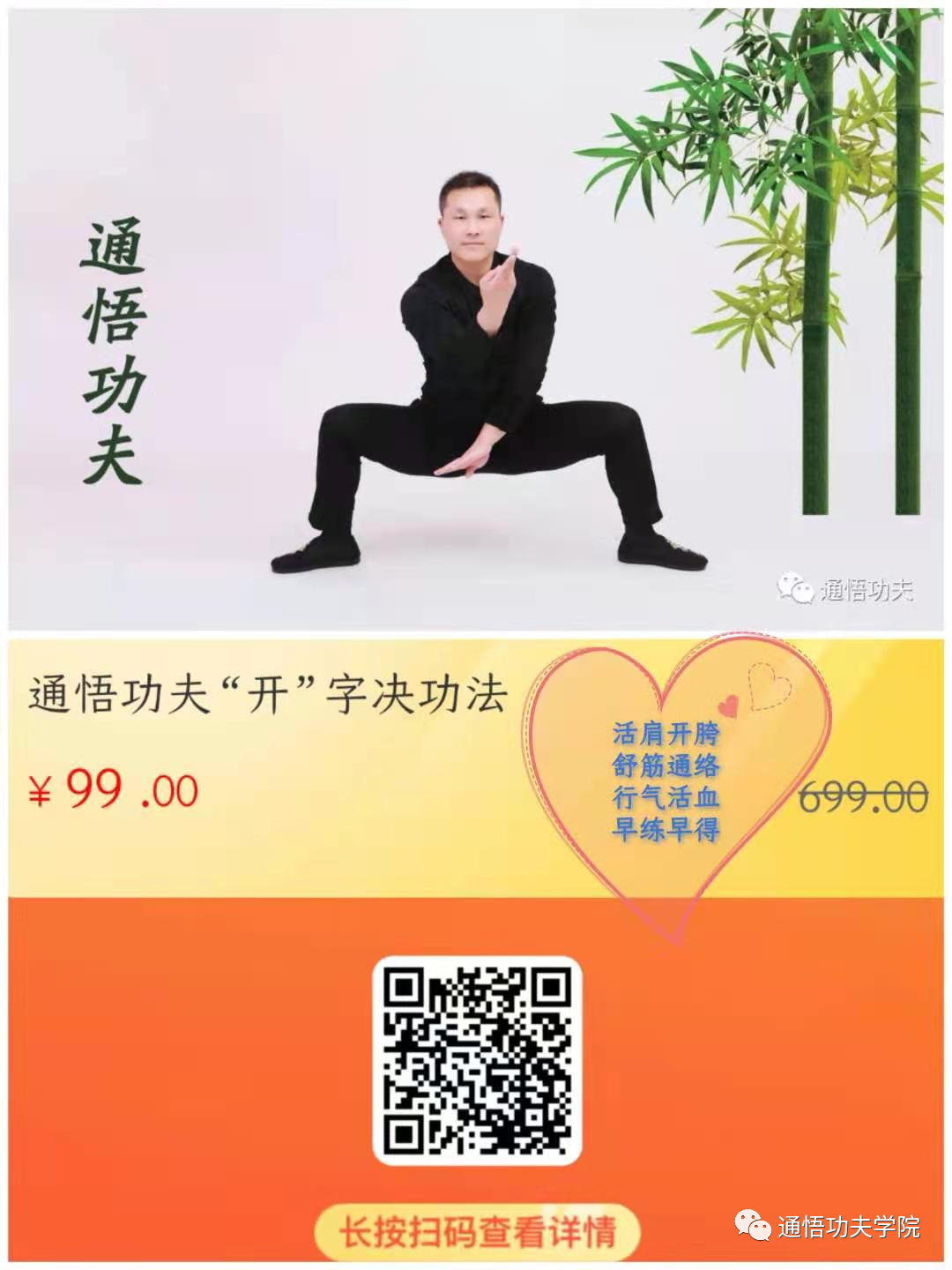
3. Spiral MovementTai Chi Principles:(1) “Move strength like drawing silk”;(2) “Move strength like coiling silk”;(3) “Follow the unfolding and gathering, never departing from Tai Chi”;(4) “A skilled hand moves in Tai Chi, transforming forms into nothingness”. From the above four principles, it is clear that Tai Chi movements must resemble the shape of drawing silk. Drawing silk is done in a rotating manner, as it naturally forms a spiral shape through rotation, representing the unity of opposites. The coiling strength or drawing strength refers to this concept. Because during the coiling process, the extension and contraction of the limbs also produce a spiral image, Tai Chi theory states that regardless of whether the movements are large or compact, one must never depart from this unified Tai Chi strength. With mastery, this spiral circle becomes smaller and smaller, reaching a state where the circle is present yet invisible, at which point it is purely guided by intention. Thus, the oppositional unity of spiral movement becomes the third characteristic of Tai Chi.Key points for practicing Tai Chi are summarized as follows:(1) The spiral strength is the origin of the name Tai Chi; without coiling strength, one cannot make strength circulate around the limbs, achieving a complete flow.(2) It is essential to understand the requirement of “penetration”; movement must not only pass through the joints but also through the muscles surrounding the joints, which is the function of spiral coiling.(3) Moving strength like coiling silk can only be realized under conditions of lightness and penetration; simultaneously, the spirit must be both vigorous and contained.(4) The application of spiral strength must avoid three defects: gaps, unevenness, and discontinuity.4. Upright and Centered, Following Up and Down in Void and Reality MovementTai Chi Principles:(1) “Intent and energy must be exchanged for agility, thus achieving a lively essence; the transformation of void and reality must be observed”.(2) “Void and reality should be clearly distinguished; where there is one, there is the other; everywhere there is this one void and one reality”.(3) “Standing must be upright and comfortable, supporting all directions”; “Up and down must follow, making it difficult for others to invade”.(4) “The tailbone is centered, and the spirit penetrates to the top”, “a straight line from top to bottom”.
From the above four principles, it is clear that Tai Chi movements must resemble the shape of drawing silk. Drawing silk is done in a rotating manner, as it naturally forms a spiral shape through rotation, representing the unity of opposites. The coiling strength or drawing strength refers to this concept. Because during the coiling process, the extension and contraction of the limbs also produce a spiral image, Tai Chi theory states that regardless of whether the movements are large or compact, one must never depart from this unified Tai Chi strength. With mastery, this spiral circle becomes smaller and smaller, reaching a state where the circle is present yet invisible, at which point it is purely guided by intention. Thus, the oppositional unity of spiral movement becomes the third characteristic of Tai Chi.Key points for practicing Tai Chi are summarized as follows:(1) The spiral strength is the origin of the name Tai Chi; without coiling strength, one cannot make strength circulate around the limbs, achieving a complete flow.(2) It is essential to understand the requirement of “penetration”; movement must not only pass through the joints but also through the muscles surrounding the joints, which is the function of spiral coiling.(3) Moving strength like coiling silk can only be realized under conditions of lightness and penetration; simultaneously, the spirit must be both vigorous and contained.(4) The application of spiral strength must avoid three defects: gaps, unevenness, and discontinuity.4. Upright and Centered, Following Up and Down in Void and Reality MovementTai Chi Principles:(1) “Intent and energy must be exchanged for agility, thus achieving a lively essence; the transformation of void and reality must be observed”.(2) “Void and reality should be clearly distinguished; where there is one, there is the other; everywhere there is this one void and one reality”.(3) “Standing must be upright and comfortable, supporting all directions”; “Up and down must follow, making it difficult for others to invade”.(4) “The tailbone is centered, and the spirit penetrates to the top”, “a straight line from top to bottom”. The above four principles illustrate that all movements in Tai Chi must clearly distinguish between void and reality. When movements can clearly transition between void and reality, one can endure without fatigue, making it the most economical form of dynamic activity. Therefore, when practicing Tai Chi, both hands must embody void and reality, and it is especially important that the left hand and left foot, as well as the right hand and right foot, follow each other in distinguishing void and reality. This means that if the left hand is solid, the left foot should be void; if the right hand is void, the right foot should be solid. This is the key to adjusting internal strength to maintain a centered balance. Additionally, the formation of points must have reality within void and void within reality, ensuring that everywhere there is this one void and one reality, allowing internal strength to achieve balance without bias. In the beginning, movements can be large in void and reality, gradually refining to small voids and realities, ultimately reaching a state where internal void and reality exist without external manifestation, which is the deepest level of adjusting void and reality.Key points for practicing Tai Chi are summarized as follows:(1) Clearly distinguish the three main voids and realities: the feet’s void and reality, the hands’ void and reality, and the void and reality of one hand and one foot.(2) Pay attention to adjusting the left hand and left foot and the right hand and right foot—this is the main key to “up and down following each other, making it difficult for others to invade”.(3) Based on the principles of lightness and heaviness, regularly check for deficiencies in distinguishing void and reality.(4) Achieve double lightness, double heaviness, and half lightness and half heaviness—these are the three non-defective voids and realities, which require constant attention and prolonged practice to develop.(5) During push hands, do not forget the principle of “corner hand facing corner hand”. The four main hands and four corner hands should interchange, practicing both.
The above four principles illustrate that all movements in Tai Chi must clearly distinguish between void and reality. When movements can clearly transition between void and reality, one can endure without fatigue, making it the most economical form of dynamic activity. Therefore, when practicing Tai Chi, both hands must embody void and reality, and it is especially important that the left hand and left foot, as well as the right hand and right foot, follow each other in distinguishing void and reality. This means that if the left hand is solid, the left foot should be void; if the right hand is void, the right foot should be solid. This is the key to adjusting internal strength to maintain a centered balance. Additionally, the formation of points must have reality within void and void within reality, ensuring that everywhere there is this one void and one reality, allowing internal strength to achieve balance without bias. In the beginning, movements can be large in void and reality, gradually refining to small voids and realities, ultimately reaching a state where internal void and reality exist without external manifestation, which is the deepest level of adjusting void and reality.Key points for practicing Tai Chi are summarized as follows:(1) Clearly distinguish the three main voids and realities: the feet’s void and reality, the hands’ void and reality, and the void and reality of one hand and one foot.(2) Pay attention to adjusting the left hand and left foot and the right hand and right foot—this is the main key to “up and down following each other, making it difficult for others to invade”.(3) Based on the principles of lightness and heaviness, regularly check for deficiencies in distinguishing void and reality.(4) Achieve double lightness, double heaviness, and half lightness and half heaviness—these are the three non-defective voids and realities, which require constant attention and prolonged practice to develop.(5) During push hands, do not forget the principle of “corner hand facing corner hand”. The four main hands and four corner hands should interchange, practicing both.
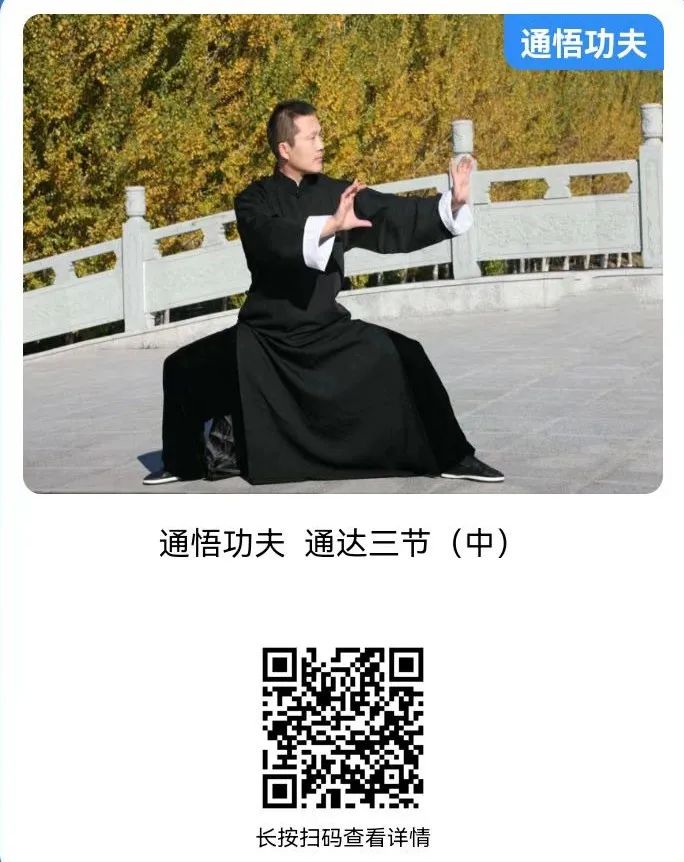
5. Movement Penetrating Jointly from the Waist and Spine, Integrating Internal and ExternalTai Chi Principles:(1) “The waist and spine are the primary rulers; when one moves, all move”;(2) “The whole body must penetrate at every joint, without any interruption”;(3) “To achieve unity in the whole body, one must first ensure there are no defects in the body”;(4) “Qi flows like a string of pearls, reaching every detail”. From the above four principles, it is clear that to achieve a state where one movement causes all movements, the waist and spine must be the center, as the waist serves as the axis for lateral rotation, and the spine is the foundation for vertical bending. Tai Chi movements must be such that when one part moves, all parts move; thus, the movement path cannot simply rotate laterally or bend vertically and horizontally, but must integrate the waist and spine, forming a spatial curve that encompasses both lateral and vertical movements. This means that only by centering on the waist and spine can the nine major joints of the body (neck, spine, waist, hips, knees, ankles, shoulders, elbows, and wrists) be sequentially connected. Additionally, one must ensure that the body is free of defects, allowing the practice to progress to a state of unity. Therefore, the movement penetrating jointly from the waist and spine, integrating internal and external, becomes the fifth characteristic of Tai Chi.Key points for practicing Tai Chi are summarized as follows:(1) The waist and spine work together as the central axis, and the arm movements should have an angle (about 45 degrees);(2) The “dynamic division” and “static unity” generated from the central axis are the key to achieving penetration through centrifugal force;(3) The integration of opening and closing is a specific manifestation of seamless penetration and smooth rotation;(4) The penetration of strength is a means to enhance the continuity of strength; (5) Reducing the mobility of the wrist joint is a necessary measure to improve body mechanics.6. Continuous Movement, Achieving Unity in One BreathTai Chi Principles:(1) “Repetitions must have folds, and advances and retreats must have transitions”;(2) “To gather is to release, to release is to gather”;(3) “When strength breaks, intention does not break; when intention breaks, spirit can connect”;(4) “Like the Yangtze River, flowing endlessly, achieving unity in one breath”.
From the above four principles, it is clear that to achieve a state where one movement causes all movements, the waist and spine must be the center, as the waist serves as the axis for lateral rotation, and the spine is the foundation for vertical bending. Tai Chi movements must be such that when one part moves, all parts move; thus, the movement path cannot simply rotate laterally or bend vertically and horizontally, but must integrate the waist and spine, forming a spatial curve that encompasses both lateral and vertical movements. This means that only by centering on the waist and spine can the nine major joints of the body (neck, spine, waist, hips, knees, ankles, shoulders, elbows, and wrists) be sequentially connected. Additionally, one must ensure that the body is free of defects, allowing the practice to progress to a state of unity. Therefore, the movement penetrating jointly from the waist and spine, integrating internal and external, becomes the fifth characteristic of Tai Chi.Key points for practicing Tai Chi are summarized as follows:(1) The waist and spine work together as the central axis, and the arm movements should have an angle (about 45 degrees);(2) The “dynamic division” and “static unity” generated from the central axis are the key to achieving penetration through centrifugal force;(3) The integration of opening and closing is a specific manifestation of seamless penetration and smooth rotation;(4) The penetration of strength is a means to enhance the continuity of strength; (5) Reducing the mobility of the wrist joint is a necessary measure to improve body mechanics.6. Continuous Movement, Achieving Unity in One BreathTai Chi Principles:(1) “Repetitions must have folds, and advances and retreats must have transitions”;(2) “To gather is to release, to release is to gather”;(3) “When strength breaks, intention does not break; when intention breaks, spirit can connect”;(4) “Like the Yangtze River, flowing endlessly, achieving unity in one breath”. From the above four principles, it is evident that Tai Chi does not merely satisfy the requirement of one movement causing all movements; it also demands that during the practice of the entire form, one can further achieve unity in one breath, maintaining continuous internal strength. This is another method to increase the volume of movement. The specific method is: when encountering repetitions in hand techniques, one must incorporate folds; when advancing and retreating in footwork, one must incorporate transitions; when opening and closing, one must embody the meaning that gathering is releasing and releasing is gathering. Of course, this characteristic, like the fifth, is realized with the assistance of spiral coiling movements. If a break in strength occurs after issuing strength, one must continue the residual intention. If intention also breaks, one must use the residual spirit of intention and strength to continue. To achieve this, strength must have folds and transitions, and movements must use intention rather than force, ensuring that the unity of gathering and releasing is as continuous as the flowing Yangtze River, with no space for residual strength or distraction, thus naturally achieving the requirement of unity in one breath. Therefore, the continuous and unbroken movement, achieving unity in one breath, can be regarded as the sixth characteristic of Tai Chi.Key points for practicing Tai Chi are summarized as follows:(1) When encountering movements with repetitions, one must incorporate folds—this is a necessary measure to achieve continuity in hand techniques.(2) When the body has advances and retreats, one must incorporate transitions—this is a necessary measure to achieve continuity in footwork.(3) If strength breaks, there must be intention; if intention is absent, there must be spirit—this is a remedy for broken strength.(4) If one can walk the form with a vigorous spirit, it proves that intention has been focused on the movements. Intention present is a sign of continuous internal strength.(5) The mutual generation of square and round Tai Chi strength arises from “exhaling to expand, which is square” and “inhaling to contract, which is round”.
From the above four principles, it is evident that Tai Chi does not merely satisfy the requirement of one movement causing all movements; it also demands that during the practice of the entire form, one can further achieve unity in one breath, maintaining continuous internal strength. This is another method to increase the volume of movement. The specific method is: when encountering repetitions in hand techniques, one must incorporate folds; when advancing and retreating in footwork, one must incorporate transitions; when opening and closing, one must embody the meaning that gathering is releasing and releasing is gathering. Of course, this characteristic, like the fifth, is realized with the assistance of spiral coiling movements. If a break in strength occurs after issuing strength, one must continue the residual intention. If intention also breaks, one must use the residual spirit of intention and strength to continue. To achieve this, strength must have folds and transitions, and movements must use intention rather than force, ensuring that the unity of gathering and releasing is as continuous as the flowing Yangtze River, with no space for residual strength or distraction, thus naturally achieving the requirement of unity in one breath. Therefore, the continuous and unbroken movement, achieving unity in one breath, can be regarded as the sixth characteristic of Tai Chi.Key points for practicing Tai Chi are summarized as follows:(1) When encountering movements with repetitions, one must incorporate folds—this is a necessary measure to achieve continuity in hand techniques.(2) When the body has advances and retreats, one must incorporate transitions—this is a necessary measure to achieve continuity in footwork.(3) If strength breaks, there must be intention; if intention is absent, there must be spirit—this is a remedy for broken strength.(4) If one can walk the form with a vigorous spirit, it proves that intention has been focused on the movements. Intention present is a sign of continuous internal strength.(5) The mutual generation of square and round Tai Chi strength arises from “exhaling to expand, which is square” and “inhaling to contract, which is round”.
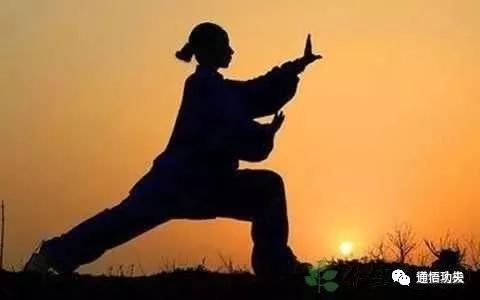
7. Movement Transitioning from Soft to Hard, and from Hard to SoftTai Chi Principles:(1) “Move strength like tempered steel, what is unbreakable?”; “Extremely soft, then extremely hard”.(2) “Externally soft, internally strong; always seek softness externally, and over time, one can attain internal strength; without the heart’s strongness, there is truly the heart’s softness”.(3) “Tai Chi must not lose its softness. The whole body reciprocates, based on spirit and intention, and with prolonged practice, it naturally connects”.(4) “The skill of moving strength first transforms hardness into softness, then practices softness into hardness. At its utmost, it is both soft and hard. The balance of softness and hardness reveals Yin and Yang. Therefore, this fist cannot be named hard, nor can it be named soft; it is simply named for its nameless Tai Chi”. From the above four principles, it is clear that in learning Tai Chi, one must first destroy the inherent hardness in movements, transforming it into softness. This is the period of softening; the longer this period lasts, the more thoroughly the rigidity can be destroyed. The key at this stage is to maintain softness while progressing towards a more elastic hardness. This hardness is not the “iron-like” hardness produced by brute force, but rather the elastic hardness generated by relaxation and lengthening. As the limbs lengthen and continuously spiral, this elasticity can be produced. Therefore, it can also be referred to as “elastic strength”. Only this elastic hardness can meet the requirement of “externally soft, internally strong”. The transition between softness and hardness is governed by the manifestation of spirit and intention. The so-called “hidden is soft, visible is hard” reflects this principle. As skills advance, the strength can become deeply hidden, making the external form appear extremely soft, while the internal quality becomes even harder. Thus, the movement transitioning from soft to hard, and from hard to soft, becomes the seventh characteristic of Tai Chi.Key points for practicing Tai Chi are summarized as follows:(1) In the early stages, one should eliminate the original rigidity, aiming for maximum softness; this period should ideally last one to two years.(2) Once the whole body is practiced to be soft, one can then specifically practice the lengthening of the body to cultivate hardness.(3) Use softness for Qi movement, and hardness for landing points; this delineates the boundary between softness and hardness in Tai Chi.(4) The combination of heart and intention with the subtle manifestation of spirit and breath is the principle governing the transition between softness and hardness in Tai Chi.(5) Achieving a high level of both softness and hardness is the standard for being recognized as a skilled practitioner of Tai Chi.8. Alternating Fast and Slow MovementsTai Chi Principles:(1) “When movement is urgent, respond urgently; when movement is slow, follow slowly”;(2) “If the opponent does not move, one does not move; if the opponent moves slightly, one moves first”;(3) “Beginners should practice slowly; slow should not be dull; after practice, one can speed up, but speed should not be chaotic”;(4) “Form should resist the five mountains, and momentum should press the three peaks, transitioning from slow to fast, from shallow to deep”.
From the above four principles, it is clear that in learning Tai Chi, one must first destroy the inherent hardness in movements, transforming it into softness. This is the period of softening; the longer this period lasts, the more thoroughly the rigidity can be destroyed. The key at this stage is to maintain softness while progressing towards a more elastic hardness. This hardness is not the “iron-like” hardness produced by brute force, but rather the elastic hardness generated by relaxation and lengthening. As the limbs lengthen and continuously spiral, this elasticity can be produced. Therefore, it can also be referred to as “elastic strength”. Only this elastic hardness can meet the requirement of “externally soft, internally strong”. The transition between softness and hardness is governed by the manifestation of spirit and intention. The so-called “hidden is soft, visible is hard” reflects this principle. As skills advance, the strength can become deeply hidden, making the external form appear extremely soft, while the internal quality becomes even harder. Thus, the movement transitioning from soft to hard, and from hard to soft, becomes the seventh characteristic of Tai Chi.Key points for practicing Tai Chi are summarized as follows:(1) In the early stages, one should eliminate the original rigidity, aiming for maximum softness; this period should ideally last one to two years.(2) Once the whole body is practiced to be soft, one can then specifically practice the lengthening of the body to cultivate hardness.(3) Use softness for Qi movement, and hardness for landing points; this delineates the boundary between softness and hardness in Tai Chi.(4) The combination of heart and intention with the subtle manifestation of spirit and breath is the principle governing the transition between softness and hardness in Tai Chi.(5) Achieving a high level of both softness and hardness is the standard for being recognized as a skilled practitioner of Tai Chi.8. Alternating Fast and Slow MovementsTai Chi Principles:(1) “When movement is urgent, respond urgently; when movement is slow, follow slowly”;(2) “If the opponent does not move, one does not move; if the opponent moves slightly, one moves first”;(3) “Beginners should practice slowly; slow should not be dull; after practice, one can speed up, but speed should not be chaotic”;(4) “Form should resist the five mountains, and momentum should press the three peaks, transitioning from slow to fast, from shallow to deep”. From the above four principles, it is evident that when initially practicing Tai Chi forms (a complete set), movements should be as slow as possible, allowing for ample time to make corrections and identify any awkwardness. However, as proficiency increases, one can gradually speed up, shortening the time required to complete a set. Yet, transitioning from slow to fast must also have limits; one must achieve speed while maintaining composure and demonstrating distinct strength without becoming erratic or chaotic. This refers to the duration of practicing a complete set. Under the overarching principle of being able to move slowly and quickly, each posture must unify these opposing aspects within itself, meaning that during transitions, one should move slowly, and after the transition, gradually speed up, reaching the fastest point at the landing, then returning to slow, and so forth. Therefore, each posture in Tai Chi must undergo training in both slow and fast movements, enabling one to respond to the opponent’s slight movements, creating favorable conditions for oneself, and achieving the unity of fast and slow. Thus, the alternating fast and slow movements become the eighth characteristic of Tai Chi.Key points for practicing Tai Chi are summarized as follows:(1) Beginners should practice slowly to allow for opportunities to check and correct movements.(2) Seeking slowness must be predicated on uplifting spirit and invigorating intention.(3) As proficiency increases, one should gradually shorten the time required to complete a set. However, seeking speed must be based on maintaining composure and demonstrating distinct strength.(4) The principle of alternating fast and slow is to move slowly during transitions, gradually speeding up after the transition, and then slowing down again after reaching the endpoint. At the same time, during transitions, Qi movement should be slow, and the landing point should be fast.(5) Throughout the entire set, the variations in speed must be balanced and clear.
From the above four principles, it is evident that when initially practicing Tai Chi forms (a complete set), movements should be as slow as possible, allowing for ample time to make corrections and identify any awkwardness. However, as proficiency increases, one can gradually speed up, shortening the time required to complete a set. Yet, transitioning from slow to fast must also have limits; one must achieve speed while maintaining composure and demonstrating distinct strength without becoming erratic or chaotic. This refers to the duration of practicing a complete set. Under the overarching principle of being able to move slowly and quickly, each posture must unify these opposing aspects within itself, meaning that during transitions, one should move slowly, and after the transition, gradually speed up, reaching the fastest point at the landing, then returning to slow, and so forth. Therefore, each posture in Tai Chi must undergo training in both slow and fast movements, enabling one to respond to the opponent’s slight movements, creating favorable conditions for oneself, and achieving the unity of fast and slow. Thus, the alternating fast and slow movements become the eighth characteristic of Tai Chi.Key points for practicing Tai Chi are summarized as follows:(1) Beginners should practice slowly to allow for opportunities to check and correct movements.(2) Seeking slowness must be predicated on uplifting spirit and invigorating intention.(3) As proficiency increases, one should gradually shorten the time required to complete a set. However, seeking speed must be based on maintaining composure and demonstrating distinct strength.(4) The principle of alternating fast and slow is to move slowly during transitions, gradually speeding up after the transition, and then slowing down again after reaching the endpoint. At the same time, during transitions, Qi movement should be slow, and the landing point should be fast.(5) Throughout the entire set, the variations in speed must be balanced and clear.
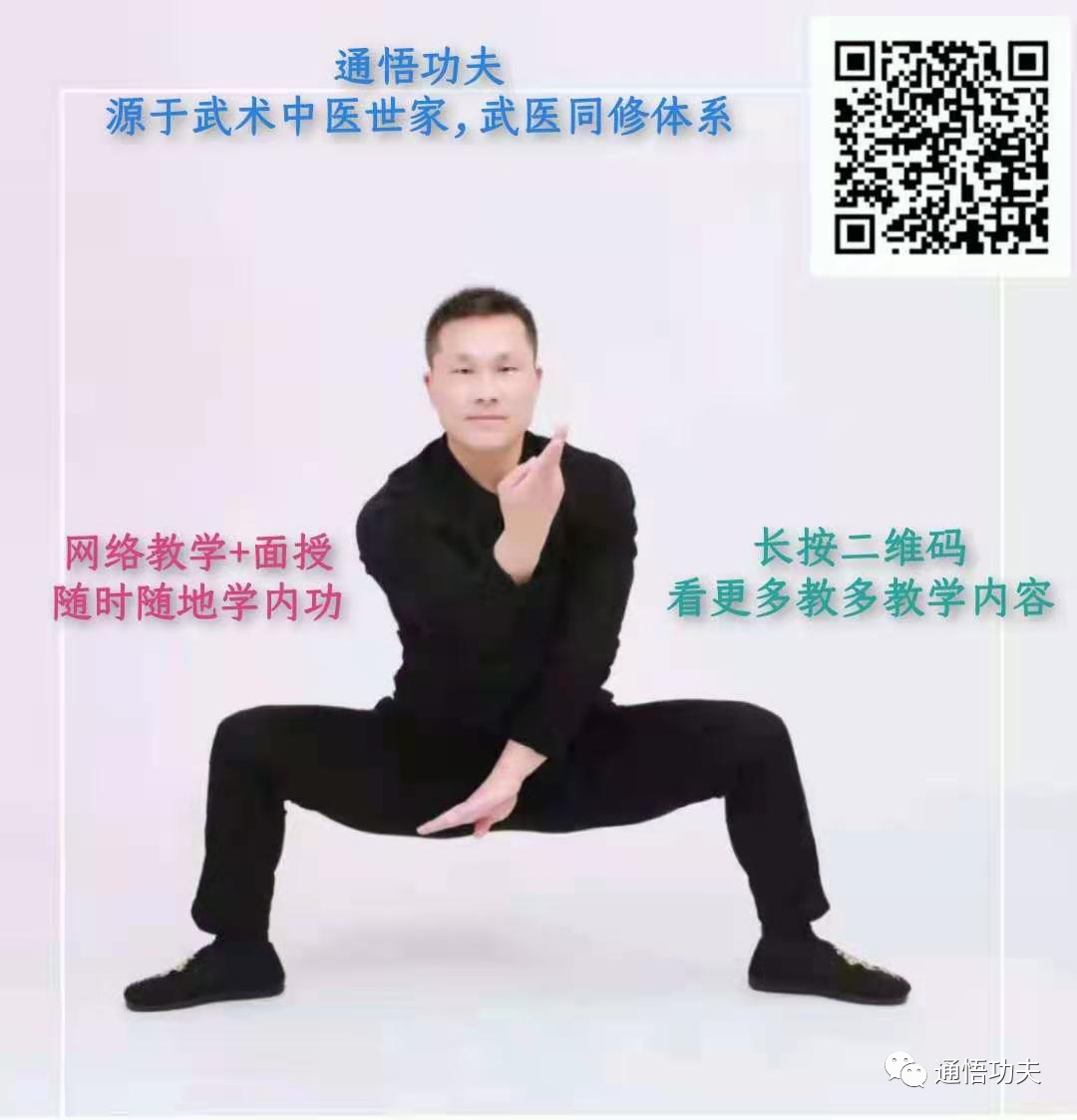
Further Reading:
Practice is Better than Theory | Internal Martial Arts Training Methods
Preserving Essence, Qi, and Spirit | The Fundamental Method of Health Preservation
Where Did Essence, Qi, and Spirit Leak? | How to Replenish Life Energy?
Share with Friends, Care for More People ❤️
Martial Arts Teachings Are Only Passed to the Virtuous; Grateful for Your Companionship on the Path of Practice!



